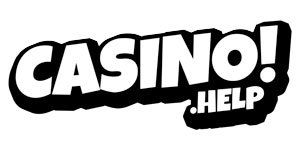Daniel Stamm
Daniel Stamm is in London to talk about his second feature film, The Last Exorcism, a documentary-style horror and FrightFest highlight, in which a charlatan preacher, Cotton Marcus (Patrick Fabian) invites a film crew to film his last exorcism. Marcus is a nonbeliever and has lived his life as little more than a con artist. He encounters more than he bargains for when he is asked to exorcise Nell Sweetzer (Ashley Bell) – is the girl simply crazy or are real supernatural forces at work? And will Marcus find his faith in time to help her? Luckily for me and a handful of other journalists, Stamm is on hand to answer all these questions and more.
Tall and gregarious, Stamm shakes us each by hand and seems genuinely delighted to talk about his film. He breaks the ice by pouring us a drink personally and jokingly admiring our various recording devices. Stamm is originally from Germany, but has spent a lot of time in Ireland as a peace worker. As such, his Bavarian accent is softened with a pleasant Irish brogue. Drinks served, we get into the interview.
One thing I wasn’t expecting was the film to be so funny, how important was humour – like in the banana bread scene? Patrick is one of the most charismatic actors I’ve seen in a long time.
Yeah, well, he’s a character with a very questionable past, he’s been exploiting people’s beliefs, and people are very touchy about that. If you want the audience to be on board with that and accept him as the protagonist as quickly as possible, then humour is a great weapon. And the banana bread recipe actually came out of him in the auditioning process. When he came in, I asked him to improvise a sermon. He had this eight minute long immaculate sermon, it was perfect, but too long, so I asked him if he could do the same thing in half the time. What I meant was to leave some of it out; instead he just he just sped up and talked twice as fast! And I couldn’t process what he was saying, it was so fast, but he had this energy which was contagious – I wanted to just stand up and cheer and say, ‘whatever you just said, let’s do it, I’m on board!’ And that’s exactly what I wanted from the character. So then we edited the scene with the banana bread, which was so important to the movie as it’s the first time you get that he’s the kind of trickster that he is, but likable and you go on the journey with him. We fade humour out completely towards the second half. I didn’t want to weave humour with the dark stuff, I just wanted to use it in the first half to make people like the characters and then go on this journey with them.
As you say, it gets darker towards the end and obviously the subject matter is pretty heavy and scary, but was that reflected behind the camera? What was the atmosphere like on set?
We were a very small team and I wanted to keep it as intimate as possible and not have people staring at the actors when they’re doing what they do. I wanted to create things on set rather than have them come onto the set with a preconceived notion; I wanted to create moments that you can feel on screen for the first time that will never happen again – a fresh, authentic thing. We would do twenty, thirty takes of just trying stuff, completely different approaches and all that. So on one hand the atmosphere was very playful, everyone really liked each other, but at the same time we were working on this plantation that had thirty-five degree heat, insects, no air conditioning, the smell… all of this intensity worked with it, doing thirty takes a day. People were so exhausted that you could do a lot – once actors get tense, it’s a great thing because they get rid of everything they thought they knew about the scene and they just want to be done with it, and that’s a tension that translates well to screen.
You talk about environment being central to such strong performances – was it an actual house you were filming in?
Yes
So how was the scouting process for locations?
We went down to New Orleans three times to look at plantations and this one had been deserted and flooded by Katrina – you could see the water mark on the wall, six feet high. Everything you see in the film, we hardly put any props in there; everything is part of the original house. It really does something to the actors when they can hear the creaking of the house. Everything you hear in the movie is all from the actual house. The creaking of the doors, it’s all real. So they actually reacted, they didn’t have to fabricate it in their heads, they didn’t have to pretend it was a spooky atmosphere – it is a spooky atmosphere. So it’s one less thing in their heads. They’re thinking less and reacting more.
This is your second film after A Necessary Death, where you’ve mixed the idea of doing a documentary and doing something that’s fictional. What led you to work in that style?
Originally, it was money issues. When we came out of film school, my thesis team and I said let’s not fall into this trap that a lot of film school students fall into where they wait for someone to give them a green light and millions to make their first movie and it never happens and a lot of people never shoot anything. So we said let’s borrow a camera somewhere, let’s tape on tapes that have been previously recorded on – we taped over the dailies of The Day After Tomorrow! – And let’s just shoot. And we didn’t even have a script, which then led to us shooting for three years, because anytime anything didn’t work in the editing room, because it didn’t cost us anything, we said let’s not waste time trying to sort this in the edit, let’s just grab the camera and go shoot. So we had all these sub plots that were going on and it took three years to make. But the style allows you to completely focus on the actors because you don’t wait for the lighting to do its thing or a close up to be lit or the actors to hit that mark, so all that is not in their heads. They can purely, really concentrate on reacting and creating moments and for a horror movie what it allows you to do is it takes away the fourth wall – you have people look directly into camera; there is no protection for the audience because they can’t say, oh this is just a movie because they are in it. They have a representative in it. And I think that they are very aware that what they see is only a frame, a snippet of the 360 degrees around them and they can’t count on me cutting to a different angle if they want to see something else because there’s no second camera. And that’s a really good style for a horror movie.
Did that lead to some improvisation?
Absolutely. We would always go back to the script, but to find the emotional core in a scene, we would always improvise. There’s a lot of stuff that changed, like with her boots, which I think is such an important scene for the girl, but that originally came from her being barefoot in the script. When we came to the location we were like, ‘we can’t have her running around barefoot, no insurance company in the world would cover it, she’s going to injure herself on the first day’. So we needed to put shoes on her somehow. So we just motivated this scene and suddenly it’s like this pivotal character moment for the girl. Stuff like that always happens. Talking about improv – the back-bend stuff which is on the poster; I didn’t know that she could do that, I cast such a great actress and then one night before we were shooting the scene, we were in the hotel lobby and I said to her, ‘is there anything you want to try tomorrow?’ She got up and said, ‘what about if I do this?’ She bent over backwards in the hotel lobby and her head almost touched the floor. I said, ‘stay where you are, I’m going to re-write the scene!’ So we just put her in a room with the camera and she did her thing and that’s almost the core of the movie now.
So there’s no effects in the whole exorcism scene?
Except for the finger breaking. She didn’t really break her fingers. Not that she wouldn’t have, committed actress that she is! We had a great make-up effect artist, Greg Nicotero who’s done all Tarantino’s movies, the Hostelmovies and all that, and it’s so seductive because there’s this multi-Oscar-winning guy there who does anything you want, and you’re making horror movies, so you’re always tempted to go crazy, and you have to remind yourself not to and to contain it. I think it kind of works like when you see the cut on the face. In horror movie gore terms, that’s not a lot of blood, but everything else is so realistic and bloodless, suddenly a gash like that has a real impact with the audience.
Did you research any real exorcisms in preparation for the film?
We did, yeah. We actually had a real exorcist on set, which again, I didn’t plan for, but he was the brother of one of our drivers and the amazing thing with him was, to me, exorcisms are this amazing spectacle, but for him it was day to day work, he couldn’t be less impressed by the whole thing, he talked like he was working in a bank, he like, ‘yeah, I go to work. There’s the devil, there’s the demon, we have a conversation!’ I thought it was great. I made the actors do a lot of research, go to sermons, things like that because I wanted them to bring something to the set that they had experienced, rather than me telling them about it and them trying to recreate my vision. I found that the less of a vision I had coming to set, the more they will fill in the pieces. That’s what you really want because then you don’t get a movie that’s kind of filtered through one mind, but it’s all these different pieces that come together. It’s like real life. The pieces contradict each other, it’s not one genre, you have funny stuff in real life, and that really works well, that style.
You’ve shown the film to part of the religious community where you were filming, what was their reaction?
They loved it. I was worried about that, but then again, The Exorcist is one of the most beloved films by Catholics. The Vatican loves The Exorcist because it shows you the devil and what they’re up against. I thought it wouldn’t really make sense for them to hate it, because we respect their faith. If Cotton Marcus had found his faith earlier, he might have been able to rescue the girl. It’s left open ended – maybe God comes to his aid, maybe He doesn’t, it’s not for me to say, I can’t really make a statement in ninety minutes and say, ‘here’s what you’re supposed to think about faith.’ So it wouldn’t have made sense to me if they had hated it, but it was a surprise that they loved it as much as they did. It spurred a real discussion in the South about the themes, In New York and Chicago; it was all about ‘was I scared? Was I entertained?’ But in the South, it was a completely different discussion. ‘Did this feel real to my emotional religious experience?’ It was fascinating.
You show one of the aspects of Patrick’s character that as well as being a priest he’s a magician. He does card tricks, he has this fake cross that billows smoke. Because you cover that aspect of magic, was it important that you follow that through in the special effects – that they should all be practical? Something that someone could create rather than CGI?
The girl was important because the spine of the movie is whether she’s possessed or whether she’s crazy, so the easiest way to make sure that we kept that line was to make sure she didn’t do anything that she couldn’t actually do. It turns out that she could do a lot more than I thought she could, with the whole double-jointed thing, but that’s why I didn’t want any special effects or anything. The same with Cotton Marcus. To me, a priest or a preacher is a magician, a great storyteller. So it should all be doable. When you’re casting, you find the people who can really pull it off and then you don’t need CGI.
Was it hard to strike a balance between human evil and supernatural evil in the film in order to keep the audience guessing as to whether or not what’s happening to the characters is real?
The audience knows they’re watching a possession movie, so it’s likely that she is really possessed. But on the other hand you know that people are going into the movie with very different belief systems. So it’s important you give one side a protagonist – and it’s the irony that it’s the priest character who doesn’t believe. And then you give the other a protagonist, Lewis, and then you just have them clash. So I think as long as you don’t pre-judge, you give characters a chance to make their argument, you will automatically get that discourse.
One interpretation that I came up with is that everything you see on screen is a hoax perpetrated by the on screen filmmakers, even the killings and the satanic ritual at the end.
I love that. That would be my favourite interpretation. But it’s very far from people’s minds because I think it’s hard for them to believe that Cotton would have found that great of an actor in Nell, for example. She’s so realistic. When I read the script that was my interpretation and I loved that it because it allows people to go if they are believers and say, ‘this was all real and they were confronted by a demon’ and if they’re cynics then they can say religion is there to make money and they really like that interpretation. But I think then it turns out that the acting is so realistic, it’s hard for people to accept that possibility. I wish there was more of that.
One scene that does support that though is when Nell shows up in Cotton’s hotel room. That scene is quite supernatural – how does she get there? Surely they must have had some kind of relationship for her to have been there?
There was a lot of the first act establishing that he is a trickster, that he’s shooting videos now, providing his own story. We did layer a lot in there to support that, but it kind of gets lost, so it’s great that people have picked up on it.
It’s almost a little too good to be true, that the first letter he picks up, opens in front of the filmmakers and goes to investigate is the one… but then that could be the forces of evil!
Exactly, the devil’s after him – if he had gone somewhere else, the devil would have followed him there.
Do you see it as evil wanting to get back at Cotton or Cotton taking this journey willingly?
Well he takes the journey willingly, but he doesn’t know what journey he’s setting out on. It is his last exorcism, so if evil wants to get him, it better do it now.
Do you have another movie lined up?
I have, but I can’t say anything! I hate it! It’s working with one of my favourite filmmakers in the world, a director who now produces. It’s a supernatural thriller, I can’t talk about it yet because the deal is still being made.
Can you tell us if it will be in the same faux-documentary style?
No, it’s a conventional narrative film. It’s funny because in meetings with producers, everybody’s always asking me if I can shoot a conventional narrative movie, and it’s all I’ve been trained to do for years! At film school it’s all we did! I have to convince everyone I can also put the camera on a tripod if necessary.
I’ve read that you’re a certified hypnotist – does that help with securing funding for your films?
Yeah! (Stamm gives me a hypnotist’s gaze and utters in a low montone) You want to give me your money… It’s actually something we did just out of fun, my editor, my writer and I, it’s something that we wanted to try that wasn’t film related. The Institute of Hypnosis in Los Angeles offered free courses, so we went, we did the course and it was fascinating, it’s completely different from what you think. You think it’s all about relaxation, but it’s really the opposite. You’re giving the person that’s being hypnotised so many little commands: could you put the chair closer, put your head here, and so on, that your filter, that monitors what goes into your subconscious, gives up because it can’t keep up – almost like Cotton Marcus giving a sermon – you just give up and let everything in and that’s when hypnosis works. But I think you’d have to be much better than I to properly hypnotise people.
To elaborate on that, you’ve been involved with music, documentary making, the hypnotism – does all this feed into your feature film work?
I think so, because you draw from a lot of different sources. Music is all about rhythm, which I think acting and editing is all about, documentary making is all about observing, which this style is very much about, initiating something and getting the best moments out of it. And hypnosis… I would love to hypnotise actors and see what happens!
Can you tell us how you got involved with The Last Exorcism?
I had made a movie called A Necessary Death, right out of film school. It was in exactly the same style as The Last Exorcism, which was originally going to be directed by Huck Botko and Andrew Gurland, who wrote it, but they had to do another movie called The Virginity Hit, which is coming out in a month and they were contractually obligated to that, so the producers were looking for a new director, saw my film and said they wanted exactly that style in a horror movie. I came aboard, read the script, loved the script. I was a fan of Eli [Roth – producer]’s, I couldn’t believe I was going to work with him.
It seems like you’ve captured the zeitgeist – there have been other horror films to use the documentary style, going back to Texas Chainsaw Massacre, but in the way this film has used viral marketing on the internet.
Well the Chatroulette thing – I didn’t even know what Chatroulette was! They pitched it and everyone was like, ‘ooh, that’s so clever!’ And I said ‘what the hell is Chatroulette?!’ When I saw it, I couldn’t believe it, it’s the smartest thing, it lends itself to the film so well. We had two million hits in two days. Our trailer didn’t have that many in a month. That thing just took off. It really helped the movie.
All of the things you see in the movie are the kinds of thing that might be put up on the internet as a hoax.
We said from the very beginning that we don’t want to pretend that this is real, ever. We’re not going to try to capture the Blair Witch phenomenon again. It’s a rich style in itself, where you don’t need that excuse; you don’t need that conceit for it to work. That’s why we scored it. A lot of people argued that we shouldn’t have, but documentaries are scored, why wouldn’t you score it? It’s edited, if you had the unedited version, you’d have 120 hours to watch. Sometimes there’s the discussion that it feels like there’s more than one camera angle – and it probably does. In the beginning, I was fanatically about it: if there’s a demon shooting out, the cameraman is going to shoot the demon, he’s not going to go, ‘there’s a demon, let’s see what Cotton Marcus thinks about this’. But then when we cut it, it was just missing. We lost our protagonist so we reshot reaction shots to keep the audience emotionally involved in the picture. There’s always a balance. Some people bitched about it, rightfully so, because they approached it more intellectually, but it’s more important that the main part of the audience goes on the journey with you.
Do you have a favourite scary movie yourself?
Psycho. Which I watched when I was eight. What that movie does – killing your protagonist after twenty minutes and then forcing you, because there was no other character to identify with, to side with the psycho killer without you knowing it’s the psycho killer and once you know it’s late – that’s genius.











































